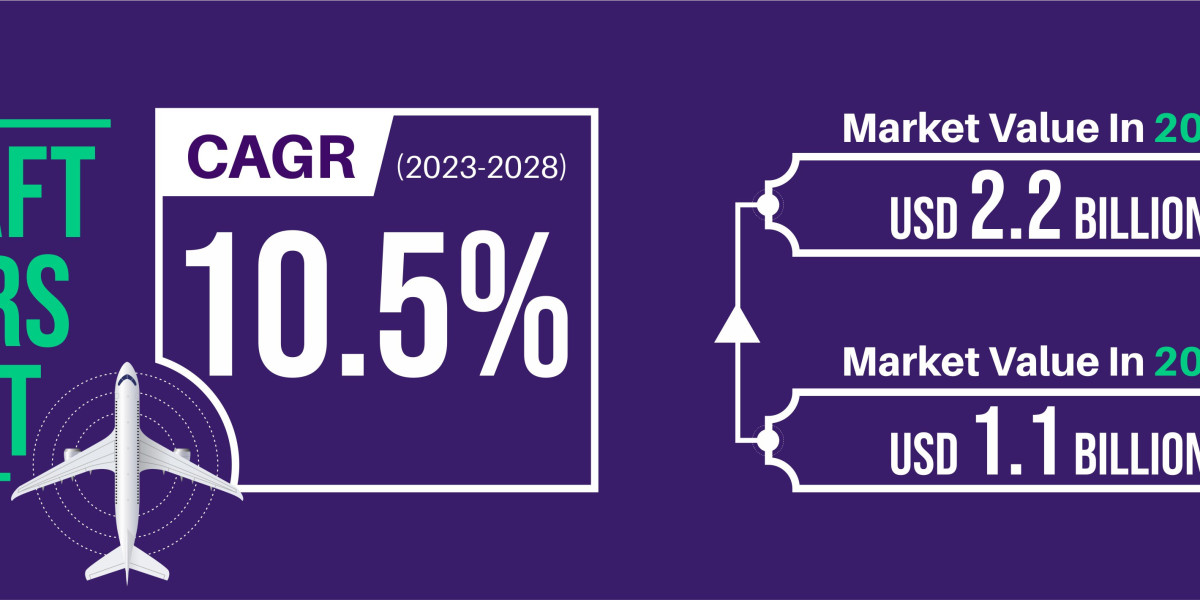The aircraft sensors market is evolving rapidly, driven by advancements in technology, increasing demand for safety and efficiency, and the growing adoption of smart systems in aviation. Sensors play a crucial role in monitoring and controlling various aircraft systems, from flight operations to engine performance. With the rise of digitization and data analytics, new trends are shaping the future of aircraft sensors, leading to more intelligent and reliable aviation systems. In this article, we will explore the top trends driving the evolution of aircraft sensors, focusing on smart systems and predictive maintenance.
According to Stratview Research, the aircraft sensors market was estimated at USD 1.1 billion in 2022 and is likely to grow at a CAGR of 10.5% during 2023-2028 to reach USD 2.2 billion in 2028.
1. Smart Sensors and Integrated Systems
One of the most significant trends in the aircraft sensors market is the development of smart sensors that integrate data processing and communication capabilities. Unlike traditional sensors that merely collect data, smart sensors can analyze and transmit information in real-time, enabling more efficient decision-making. These sensors are designed to enhance aircraft performance, safety, and fuel efficiency by providing detailed insights into various components and systems.
Smart sensors are increasingly being used in flight control systems, environmental monitoring, and avionics to ensure optimal performance. By enabling real-time data sharing between aircraft systems and ground control, smart sensors facilitate faster response times and improved system diagnostics, ultimately enhancing flight safety and operational efficiency.
2. Predictive Maintenance and Condition Monitoring
Predictive maintenance is another key trend that is transforming the aircraft sensors market. As airlines strive to reduce downtime and maintenance costs, the use of sensors to predict equipment failures before they occur has become increasingly important. Aircraft sensors continuously monitor the health of critical systems, such as engines, landing gear, and hydraulic systems, providing real-time data on their condition.
This data allows airlines to move from a reactive to a proactive maintenance approach, identifying potential issues before they lead to system failures. By leveraging predictive analytics, airlines can schedule maintenance more effectively, reduce unscheduled repairs, and minimize costly downtime. This shift toward predictive maintenance is revolutionizing aircraft operations by improving reliability, safety, and cost-efficiency.
3. Wireless and Miniaturized Sensors
The advancement of wireless sensors and miniaturization is another notable trend. Wireless sensors eliminate the need for complex wiring, reducing aircraft weight and simplifying system architecture. These sensors are particularly useful for monitoring hard-to-reach areas and can be easily integrated into existing aircraft systems. Additionally, the miniaturization of sensors allows for more components to be monitored without adding significant weight, which is critical for optimizing fuel efficiency.
4. Environmental and Emission Monitoring
As the aviation industry faces growing pressure to reduce its environmental impact, sensors are increasingly being used to monitor aircraft emissions and environmental conditions. Advanced sensors can track carbon emissions, fuel consumption, and air quality in real time, helping airlines adhere to strict environmental regulations. This trend is particularly important as the industry moves toward greener aviation solutions.
Conclusion
The future of the aircraft sensors market lies in the integration of smart systems, predictive maintenance, and innovative technologies such as wireless and miniaturized sensors. As these trends continue to shape the aviation industry, sensors will play a pivotal role in enhancing safety, efficiency, and sustainability. By staying ahead of these developments, airlines and manufacturers can harness the full potential of next-generation aircraft sensors to meet the challenges of modern aviation.



